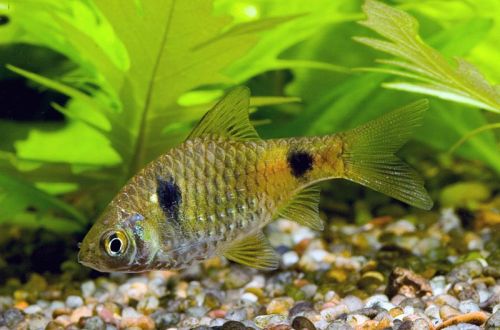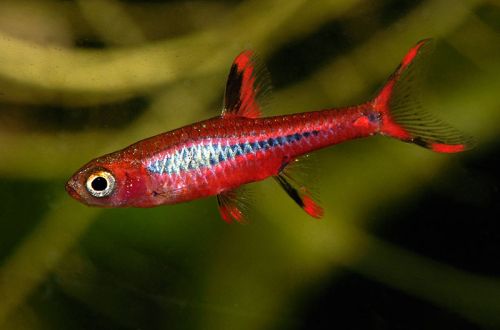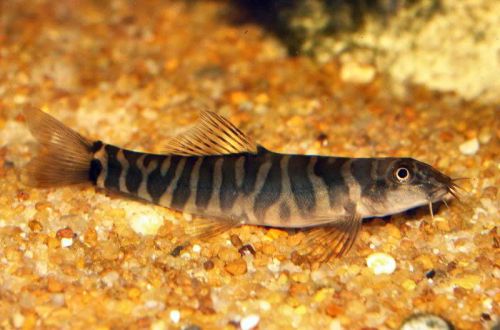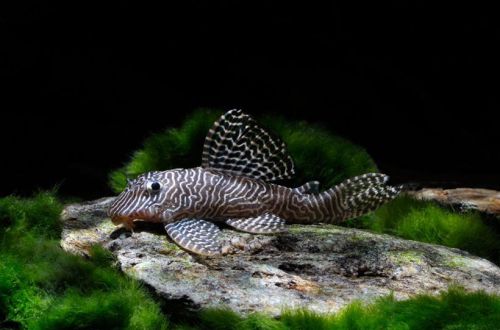
Barbus Didi
Barbus Didi, scientific name Pethia didi, belongs to the family Cyprinidae (Cyprinidae). A rare guest in the home aquarium, mainly because of the not so expressive coloration in comparison with other Barbs. Otherwise, this fish is characterized by unpretentious content, good compatibility with other species, and its breeding will be possible even for beginner aquarists.

Contents
Habitat
comes from Southeast Asia, from the territory of Myanmar (Burma). Found in the Ayeyarwaddy River basin. Inhabits mainly small tributaries, streams flowing through the tropical forest, the bottom of which is usually littered with snags and foliage. The substrate consists of silt mixed with sand and stones. The water is cloudy, with a lot of suspended matter. Aquatic vegetation is represented by plants, mosses, ferns and algae.
Brief information:
- The volume of the aquarium – from 60 liters.
- Temperature – 15-25°C
- Value pH — 6.5–7.0
- Water hardness – 0–5 dGH
- Substrate type – any
- Lighting – subdued
- Brackish water – no
- Water movement is weak
- The size of the fish is about 4 cm.
- Feeding – any food of suitable size
- Temperament – peaceful
- Keeping in a group of 8-10 individuals
Description
Adult individuals reach a length of about 4 cm. The color is light with yellow tints, the fins are translucent. The body pattern consists of two dark strokes, the first is located behind the gill cover, the second at the base of the tail. Sexual dimorphism is weakly expressed. Males are slightly smaller than females, but they are distinguished by rich colors.
Food
Not demanding on the composition of food. The home aquarium will accept most popular foods of suitable size (dry, live, frozen) with herbal supplements. They can be already in the feed or as separate components, for example, in the form of spirulina flakes.
Maintenance and care, arrangement of the aquarium
The optimal size of the aquarium for a small flock of Didi Barbs starts from 50-60 liters. Arrangement is optional. If desired, it can be brought closer to natural conditions by using dark soil, thickets of floating and rooting shade-loving plants, and various snags. The lighting is subdued.
Successful keeping is largely dependent on maintaining high water quality without sudden fluctuations in temperature, pH and dGH values, as well as on the timely implementation of several standard aquarium maintenance procedures. These include: weekly replacement of part of the water with fresh water, cleaning of organic waste, preventive maintenance of equipment and monitoring of hydrochemical indicators.
Behavior and Compatibility
Peaceful mobile fish, prefers to be in a flock of at least 8-10 individuals. Compatible with other species of comparable size and temperament, so there will be no problems with choosing neighbors.
Breeding / breeding
Barbus Didi has a breeding strategy typical of most cyprinids. With the onset of the mating season, females scatter many eggs in the water column, and males at this moment fertilize them. The incubation period lasts about one day, after another day the fry begin to swim freely. Fish do not show parental care for offspring. Eggs and fry that have appeared from the first days become left to themselves and often become a victim of adult fish in the environment of a common aquarium.
If you plan to keep the brood, then you will need to prepare a separate tank with identical water conditions, where the eggs will be placed at the end of spawning. This impromptu spawning aquarium can be a small tank of 10 liters or more, equipped with a simple airlift filter with a sponge and a heater. Additional lighting is not required, the light coming from the room will be enough. The design can be neglected, or artificial ornamental plants can be used.
Fish diseases
In a balanced aquarium ecosystem with species-specific conditions, diseases rarely occur. Often, diseases are caused by environmental degradation, contact with sick fish, and injuries. If this could not be avoided and the fish shows clear signs of illness, then medical treatment will be required. Read more about symptoms and treatments in the Aquarium Fish Diseases section.





